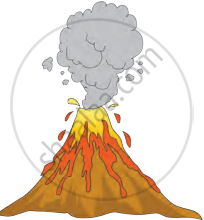Topics
Distributional Maps
- Distributional Maps
- Dot Method
- Choropleth Method
- Isopleth Method
- Geographical Field Visit
Endogenetic Movements
- Endogenetic Processes (Internal Movements)
- Slow Movements
- Mountain-building Movements (Orogenic)
- Continent-building (Epeirogenic) Movements
- Sudden Movements
- Earthquake
- Seismogram
- Earthquake and its causes
- Volcano
- Types of Volcanoes
- Effect of Volcanoes
- Distribution of Plates, Earthquake Zones, and Volcanoes in the World
Exogenetic Processes Part - I
- Exogenetic Processes
- Weathering
- Mechanical Weathering
- Chemical Weathering
- Biological Weathering
- Mass Movements (Mass Wasting)
- Erosion
Exogenetic Processes Part - II
- Exogenetic Processes
- Work of Rivers and Landforms
- Work of Glaciers and Landforms
- Work of the Wind and the Landforms Production
- Work of Sea Waves and the landforms
- Work of Groundwater and Landforms Production
Precipitation
- Precipitation
- Rainfall and It's Types
- World Distribution of Rainfall
- Rain Gauge
- Fog, Dew, and Frost
- Effects of Precipitation
- Acid Rain
Properties of Sea Water
- Properties of Sea Water
- Temperature of Sea Water
- Salinity of the Sea Water
- Density of Sea Water
- Distribution of Temperature, Salinity and Density of Seawater According to Depth
International Date Line
- Introduction of International Date Line
- Solution to the Confusion of Days
- International Date Line
Introduction to Economics
- Introduction to Economics
- Economy
- Types of Economy
- Globalisation of the Economy
- Functions of an Economy
Trade
- Concept of the Trade
- Types of Trade
- Balance of Trade
- International Trade Organisations
- Marketing
- Importance of Marketing
Urbanisation
- Urbanisation
- Reasons for Urbanisation
- Advantages of Urbanisation
- Problems of Urbanisation
Transport and Communication
- Transportation
- Importance of Transportation
- Communication
Tourism
- Tourism
- Types of Tourism
- Importance of Tourism Development in India
- Introduction
- Causes and Effects
Introduction:
A volcano occurs when hot substances (solids, liquids, and gases) from inside the earth are pushed out through the earth’s crust. This happens because the interior of the earth is very hot, and these substances escape through cracks or openings on the surface.
- Volcanoes erupt in the sea as they do on land. The same substances that come out during the eruption of a volcano on the land are ejected during the eruption of a volcano in the sea.
- Some islands are created due to the eruption of volcanoes in the sea. It is not possible to prevent the eruption of a volcano, to stop it after it erupts, or to control it.
- However, by means of science and technology, it is possible to predict an eruption and to take immediate steps for disaster management.

Volcano
Causes and Effects
Causes:
- Heat and pressure inside the earth push hot substances toward the surface.
- The movement of molten rocks and gases from beneath the earth’s crust causes eruptions.
Effects:
- Lava and ash collect on the surface, forming mountains or hills.
- Ash and gases pollute the atmosphere.
- Rain often follows a volcanic eruption.
- Temperature rises due to hot gases.
- Forests and settlements can get buried under hot mud.
- Volcanic eruptions in the sea can create new islands.
If you would like to contribute notes or other learning material, please submit them using the button below.

